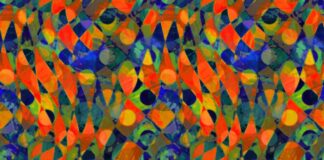Yosys is an open-source framework for Verilog RTL synthesis. It stands for “Yosys Open SYnthesis Suite” and is widely used in digital design and hardware description language (HDL) communities. Yosys provides a powerful set of tools for converting RTL (Register-Transfer Level) designs written in Verilog or SystemVerilog into optimized gate-level representations, which can then be used for further stages of the hardware design flow, such as place-and-route and fabrication. Let’s delve into some important aspects of Yosys:
1. Synthesis Process: Yosys takes an RTL design described in Verilog or SystemVerilog and performs various transformations to convert it into an optimized gate-level netlist. This process involves several stages, including elaboration, optimization, technology mapping, and output generation.
2. RTL Design Input: Yosys accepts RTL designs in Verilog or SystemVerilog. These designs describe the behavior of a digital circuit using modules, signals, and their interactions. The RTL code serves as the starting point for synthesis.
3. Elaboration: During elaboration, Yosys processes the input RTL design to create an abstract representation of the design’s structure. It parses the Verilog code, creates a hierarchical module hierarchy, and resolves signal connections.
4. Optimization: Yosys performs various optimizations to enhance the design’s efficiency, reducing area, power consumption, and critical path delay. Optimization techniques include constant propagation, common subexpression elimination, and logic minimization.
5. Technology Mapping: In this stage, Yosys maps the optimized RTL design onto a target technology library, which contains information about the available logic gates and their characteristics in the specific fabrication process. This step involves choosing appropriate gates to implement the design’s functionality.
6. Advanced Synthesis Techniques: Yosys supports more advanced synthesis techniques like retiming, resource sharing, and technology-specific optimizations. These techniques further improve the design’s performance by considering aspects like clock tree synthesis and critical path analysis.
7. Scripting and Automation: Yosys is driven by textual script files that define the synthesis flow. These scripts can be written in a custom scripting language called “Yosys Scripting Language” (YSL), which allows users to define the synthesis steps, constraints, and other customization options.
8. Formal Verification: Yosys can be used for formal verification tasks alongside synthesis. It provides tools for checking properties of the RTL design using formal methods. This enables designers to catch potential bugs and verify correctness early in the design process.
9. Ecosystem and Extensions: Yosys is often used in combination with other tools and flows in the digital design ecosystem. It can be integrated with tools for logic equivalence checking, timing analysis, and more. Additionally, Yosys supports a range of extensions and plugins to enhance its capabilities.
10. Open-Source Community: Yosys is maintained as an open-source project, making it accessible to a wide audience. The community actively contributes to its development, fixes bugs, adds new features, and shares knowledge through forums, mailing lists, and collaborative platforms.
Yosys is a pivotal open-source framework within the field of digital design, specializing in RTL synthesis. The acronym stands for “Yosys Open SYnthesis Suite,” reflecting its commitment to openness and comprehensive synthesis capabilities. Serving as a fundamental tool in the hardware description language (HDL) landscape, Yosys empowers designers to translate Register-Transfer Level (RTL) designs, often scripted in Verilog or SystemVerilog, into optimized gate-level representations. This synthesized netlist forms a crucial bridge for subsequent phases of the hardware design process, such as placement, routing, and fabrication.
At the core of Yosys’s functionality lies its multi-step synthesis process. This intricate process commences with the acceptance of RTL design inputs, usually provided in Verilog or SystemVerilog. These inputs encapsulate the intended behavior of a digital circuit through modules, signals, and their interconnections. The subsequent elaboration phase involves parsing the RTL code, constructing a hierarchical module hierarchy, and resolving signal connections, culminating in an abstract representation of the design’s structure.
Subsequently, Yosys engages in rigorous optimization, where it applies an array of techniques to refine the design’s efficiency. The primary objectives include reducing the design’s area, power consumption, and critical path delay. Techniques encompass constant propagation, common subexpression elimination, and logic minimization, all of which collectively enhance the design’s overall performance. The subsequent stage, technology mapping, involves the mapping of the optimized RTL design onto a pre-defined technology library. This library encodes vital information about the characteristics of available logic gates in a specific fabrication process. Consequently, Yosys strategically selects gates to implement the design’s intended functionality.
Yosys’s appeal extends to its capacity to execute advanced synthesis techniques. The software facilitates intricate methods such as retiming, resource sharing, and technology-specific optimizations. These techniques play a pivotal role in augmenting the design’s overall performance by accounting for considerations like clock tree synthesis and critical path analysis. Complementing this functionality, Yosys empowers users through scripting and automation. Driven by textual script files written in the Yosys Scripting Language (YSL), designers can finely orchestrate the synthesis flow. This level of scripting customization facilitates a tailored synthesis process with scope for constraints, design rules, and other specialized features.
In addition to its core synthesis capabilities, Yosys boasts a capacity for formal verification tasks. This includes checking properties of the RTL design through formal methods, enhancing the early-stage bug detection and overall correctness verification. In a broader context, Yosys is not an isolated tool but thrives within the digital design ecosystem. It seamlessly integrates with an array of tools, including those dedicated to logic equivalence checking and timing analysis. Moreover, Yosys’s extensibility is demonstrated through its support for extensions and plugins, bolstering its already robust feature set.
Central to Yosys’s existence is its vibrant open-source community. Maintained collaboratively, the project enjoys active contributions from developers and enthusiasts alike. This communal engagement is evident through continuous development, bug resolution, feature augmentation, and the exchange of insights on forums, mailing lists, and other collaborative platforms. Collectively, Yosys’s influence within the realm of RTL synthesis is formidable, providing designers with an indispensable toolset to traverse the complex landscape of digital hardware design with precision and efficiency.
In summary, Yosys is a powerful and versatile open-source framework for RTL synthesis. It enables designers to convert high-level hardware descriptions into optimized gate-level representations, paving the way for further stages in the hardware design flow. With a focus on efficiency, customization, and integration with formal verification, Yosys plays a crucial role in modern digital design methodologies.














